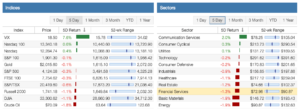Increasing Dividend Yield Part IV: Bonds
This is the fourth installment in a multi-part series that looks at various options used by income investors to boost their yield while waiting for dividend growth to lift their portfolio’s overall yield-on-cost. Last week we looked at Preferred Stock. This week we are looking at Bonds.
A bond is a debt security in which the issuer agrees to repay borrowed money with interest at fixed intervals. Bondholders have a creditor stake in the company. Technically, bonds do not pay dividends, but instead they pay interest. However, bonds are an important allocation for many income investors, thus I chose to include them in this series. There are certain things an informed investor needs to understand before purchasing bonds.
Interest rates play an integral part in determining the current value of a bond. Interest rates and the price of a bond are inversely related. The longer the time until a bond matures, the more susceptible its price is to changes in interest rates. Consider two bonds, one that has a maturity of 30 years and another with a 7 day maturity. If after both bonds are sold, interest rates go up one percent, the price of both bonds will decline since new investors expect to earn the prevailing interest rate. However, the interest rate decline will affect the price of the 30 year bond more than the 7 day bond, due to the longer period of “lost” earnings. It works the same in the other direction – if interest rates drop the bond holder will sell it at higher price which lowers the yield to the market rate.
In summary, longer-term investments have lower rate volatility at the expense of higher price volatility. Therefore, the term of the bond purchased should be dictated by your long-term investment goals. If your goal is capital preservation, short-term is the most appropriate investment. If an investor is willing to hold a bond until it matures and values lower rate volatility, then a longer-term investment will likely better meet this investor’s needs.
Like preferred stocks, many investors choose not to research and buy individual bonds. Instead, they have opted to make their bond investments in funds. Consider the following bond funds:
Vanguard Long-Term Bond ETF (BLV) – Yield: 2.91%
Vanguard Long-Term Bond ETF seeks to track the performance of a market-weighted bond index with a long-term dollar-weighted average maturity. It maintains a dollar-weighted average maturity consistent with that of the Index, which generally ranges between 15 and 30 years.
Vanguard Intermediate-Term Bond ETF (BIV) – Yield 1.98%
The investment seeks to track the performance of a market-weighted bond index with an intermediate-term dollar-weighted average maturity. The fund maintains a dollar-weighted average maturity consistent with that of the index ranging between 5 and 10 years.
The investment seeks to track the performance of a market-weighted bond index with a short-term dollar-weighted average maturity. The fund’s dollar-weighted average maturity is not expected to exceed 3 years
Vanguard Total Bond Market ETF (BND) – Yield: 1.95%
The investment seeks to track the performance of a broad, market-weighted bond index. The fund maintains a dollar-weighted average maturity consistent with that of the index, ranging between 5 and 10 years.
Invest Grade Corp Bond (LQD) – Yield: 2.48%
The investment seeks results that correspond generally to the price and yield performance, before fees and expenses, of the iBoxx $ Liquid Investment Grade index. The fund typically invests at least 90% of assets in the bonds of the underlying index, and at least 95% of assets in investment-grade corporate bonds.
20+ Year Treasury Bond (TLT) – Yield 1.50%
The investment seeks results that correspond generally to the price and yield performance, before fees and expenses, of the Barclays Capital U.S. 20+ Year Treasury Bond index. The fund generally invests at least 90% of assets in the bonds of the underlying index.
Full Disclosure: No position in the aforementioned securities.
– Holding Bonds Could Push Your Portfolio Into The High Risk Category
– 5 Companies With The Power of 5/15 Dividend Growth
– Market Timing vs. Buy And Hold
Published at Tue, 21 Dec 2021 00:30:00 -0800





